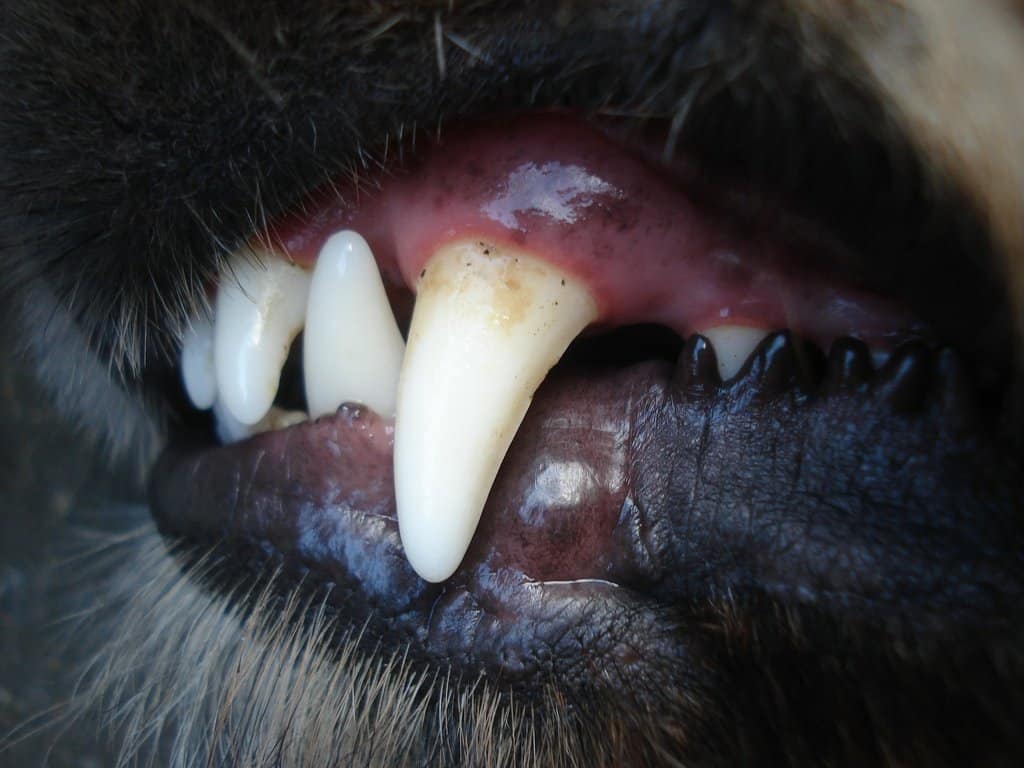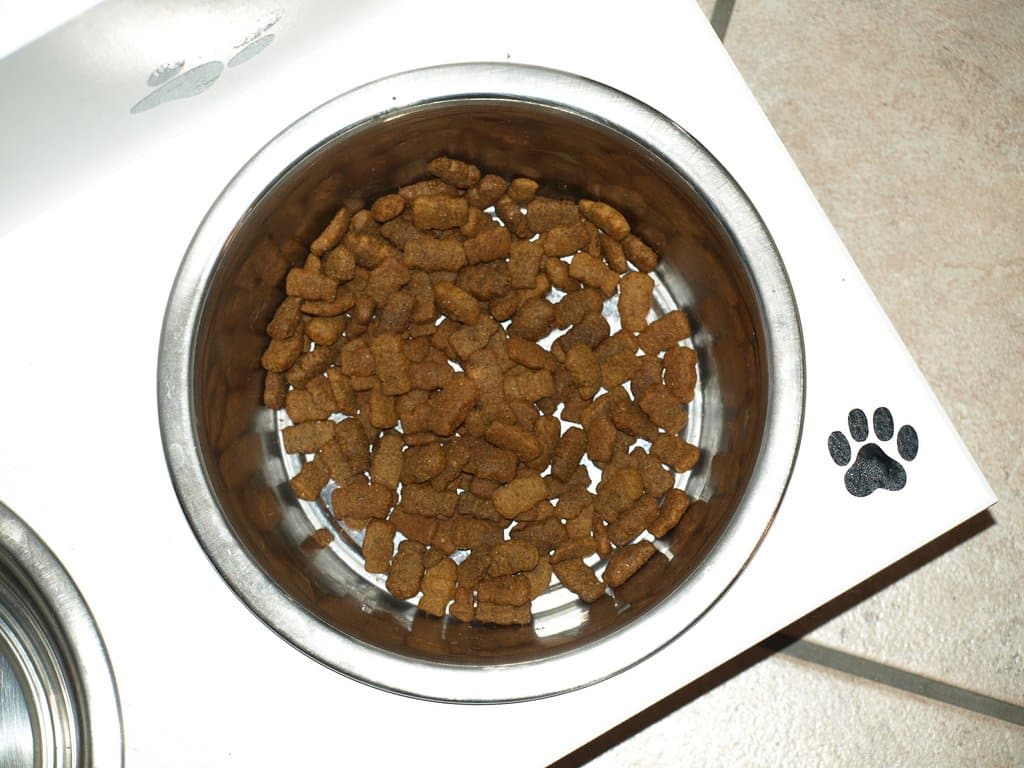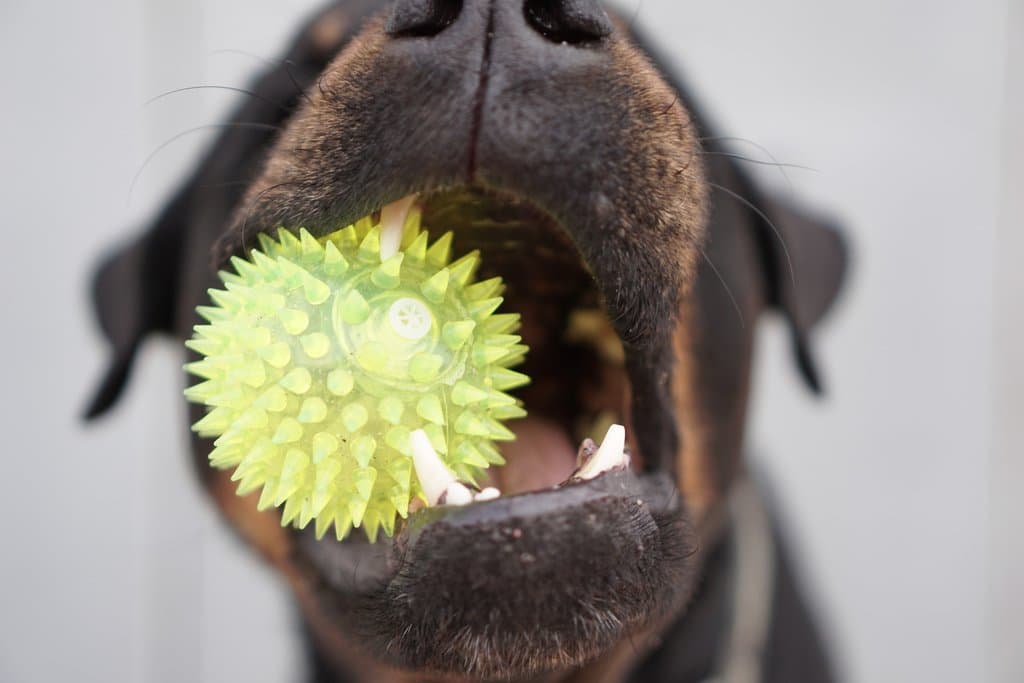Periodontal Disease Is More Common—And More Serious—Than You Might Think.
Learn the basics of good dental care for dogs, from nutrition to professional cleanings.
Your adult dog has 42 teeth, but when was the last time you gave them a second thought?
Dogs use their teeth just as much (if not more than) their human family members, so it’s even more important that those pearly whites stay in good condition throughout their lives.
In this article, we’ll discuss the hidden dangers of periodontal disease and how nutrition is the key to good dental care for dogs.
Dental Disease In Dogs
Preventing and reversing dental disease is about more than just giving your dog fresh breath and a shiny smile.
It’s about keeping them healthy.
Bacteria form a soft, sticky biofilm known as plaque. The structure of biofilms makes them difficult to wash away (rinsing doesn’t cut it). Unless it is removed, plaque hardens and turns into tartar within 36 hours. Tartar is much harder than plaque and contains crevices which in turn, capture more bacteria.
If the plaque bacteria reaches the gums, it can cause the inflammation which is the telltale sign of gingivitis. Gingivitis is the first step in the progression of periodontal disease. Left untreated, the tartar continues to build up between the teeth and gums, creating spaces for more bacteria to enter.
The consequences of periodontal disease in dogs are the same as they are in humans. In addition to pain, your dog may experience tooth loss. Moreover, bacteria can easily enter the bloodstream through the mouth and spread throughout the body, causing kidney and liver problems.
Signs Of Dental Disease In Dogs
Clear signs of dental disease in dogs are foul breath, red or swollen gums, yellow or brown discoloration, and difficulty chewing. However, dental disease is usually present long before your dog begins to display these signs.
Because very few dog owners brush their dogs’ teeth regularly, there is a good chance that your dog already has some form of dental disease. However, there are certain breeds that are more prone to dental disease:
- Pugs
- Chihuahuas
- Greyhounds
- Shetland Sheepdogs
- Yorkshire Terriers
- Cavalier King Charles Spaniels
- Labrador Retrievers
- Dachshunds
- Collies
- Boxers
- Chinese Cresteds
If you have any one of these breeds, make sure your vet checks their teeth thoroughly at every checkup to watch for signs of breed-specific complications.
Importance Of Diet
Just as with humans, diet is likely the culprit for most dogs’ dental issues.
Eating highly processed foods without the proper level of nutrients can lead to gingivitis and plaque buildup in any species, including dogs. And as we mentioned earlier, once bacteria are present under the gums, they can reach the bloodstream and wreak havoc throughout the body.
“But I feed my dog crunchy kibble…isn’t that supposed to be good for their teeth?”
In theory, it makes sense that a crunchy kibble would help to “scrub” plaque off the teeth. But in practice, it’s simply not true. It’s a lot like relying on the hard texture of a lollipop or potato chip to rid your own mouth of plaque.
Most kibbles are high in starches and sugars (like those found in corn), which is unlikely to provide any cleaning benefits. In fact, soft foods are actually much better on your dog’s teeth, as they are less likely to get stuck between their teeth.
Feeding your dog a wholesome diet of naturally prepared, USDA-inspected food that is high in calcium will not only fortify their bodies, it will strengthen their teeth as well.
How To Brush Your Dog’s Teeth
Regular brushing is the best way to take care of your pup’s pearly whites. But very few dog owners include tooth brushing in their dogs’ grooming regimens.
Most dogs don’t enjoy having strange objects shoved into their mouths, so you will have to acclimate them to the process. Pick a time when your dog is calm with no distractions. Find a spot where you will both be comfortable, and with good enough lighting that you can see their teeth clearly.
At first, you will start by lifting your dog’s lip and touching their teeth and gums. This is the first step to getting them used to having your hands in their mouth. Once they have adapted to this, you can introduce a toothbrush (save the toothpaste for later).
There are many different styles of dog toothbrushes available, from ones that closely resemble human brushes to ones that wrap around your dog’s teeth and versions that slip over your finger. Choose a style that works best for you and your dog.
Once they’re used to the toothbrush, you can introduce toothpaste.
It’s important to use a toothpaste that is specially formulated for dogs. Human toothpaste often contains xylitol as a sweetener, which can be toxic to dogs in certain concentrations.
Pick a flavor of toothpaste your dog will enjoy (mint, peanut butter, and chicken are popular!). You can also let them lick the toothpaste first so they will start to look forward to their brushing.
Remember, give lots of praise throughout so your dog knows what a good boy (or girl) they are!
Can Treats And Toys Clean My Dog’s Teeth?
The market abounds with chewy treats and toys that claim to scrub plaque from your dog’s teeth, but is it true?
Unfortunately, no.
Chewy treats are often no different from kibble when it comes to their ability to clean a dog’s teeth. And while toys can help remove plaque in some areas, they won’t reach into every corner and crevice.
Besides, relying on a dog to do an effective job at brushing his own teeth is like expecting a toddler to pack a healthy lunch. It’s not going to happen.
Plus, if your dog is already feeling the tenderness and pain of periodontal disease, she is unlikely to chew with those teeth, so they will remain unbrushed unless you do it for her.
Professional Cleanings
It is very likely that your dog’s veterinarian offers professional tooth cleaning for your dog. You may even have taken them up on the offer.
During a professional tooth cleaning, dogs are usually given a sedative so that the vet can access their mouth easily. The teeth are then scraped of tartar and plaque (much like when you visit the dentist) and polished to remove any scratches.
If your dog has a serious case of periodontal disease, they may lose several teeth during this process.
While anesthesia-free dental cleanings are available, it can be difficult for your dog to sit still enough through the entire process for the hygienist to do a thorough job.
Conclusion
Practicing good dental care for dogs should involve regular brushing—and possibly a professional cleaning—but proper dental health starts with good nutrition.
Processed kibble does not “brush” your dog’s teeth and often contains starches and sugars that make dental issues worse.
By giving your dog a wholesome diet containing the right nutrients—like calcium—you can prevent periodontal disease and costly professional cleanings.
At Rick’s Dog Deli, our meal formulations contain calcium in the form of ground eggshells, which are not only safe, but an effective, natural source of this vital nutrient. And your dog will love chowing down on our fresh, USDA-inspected ingredients.
Drop by our Orlando location or see if you’re in our delivery zone!



